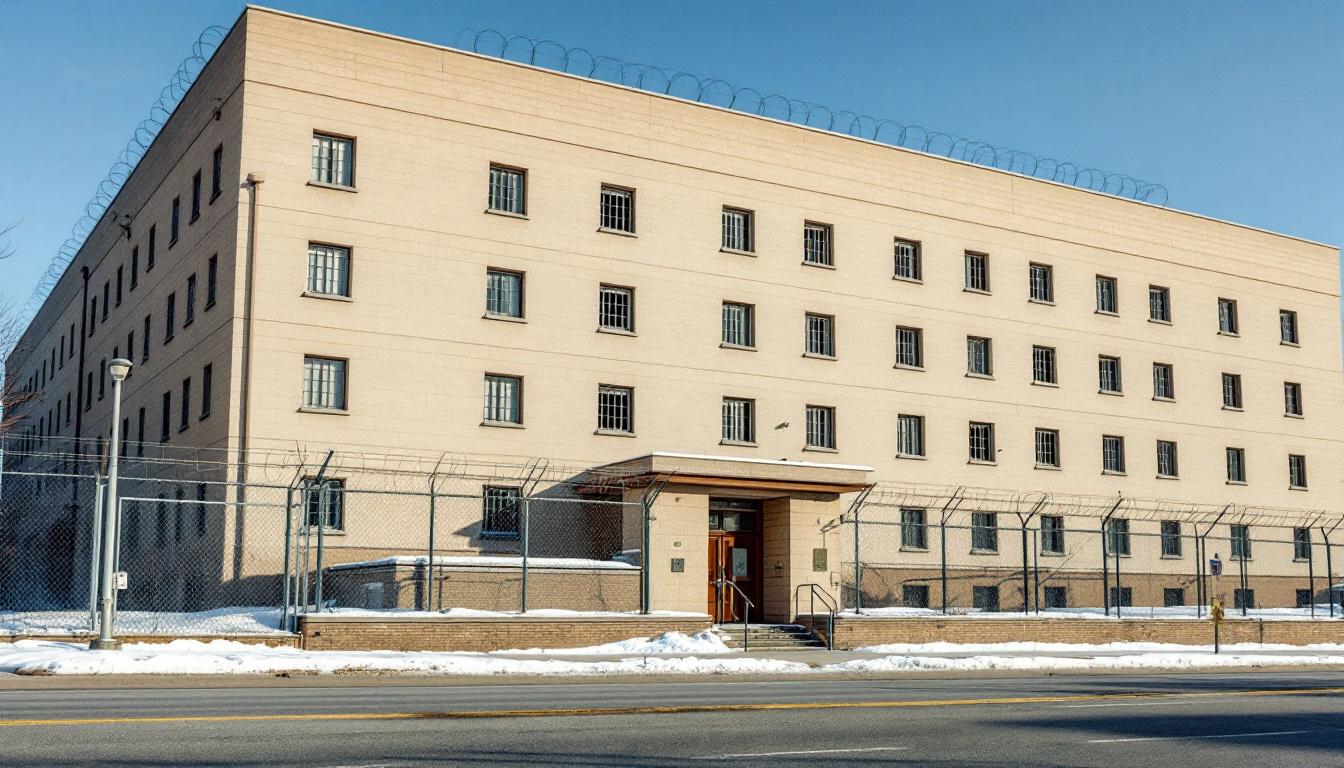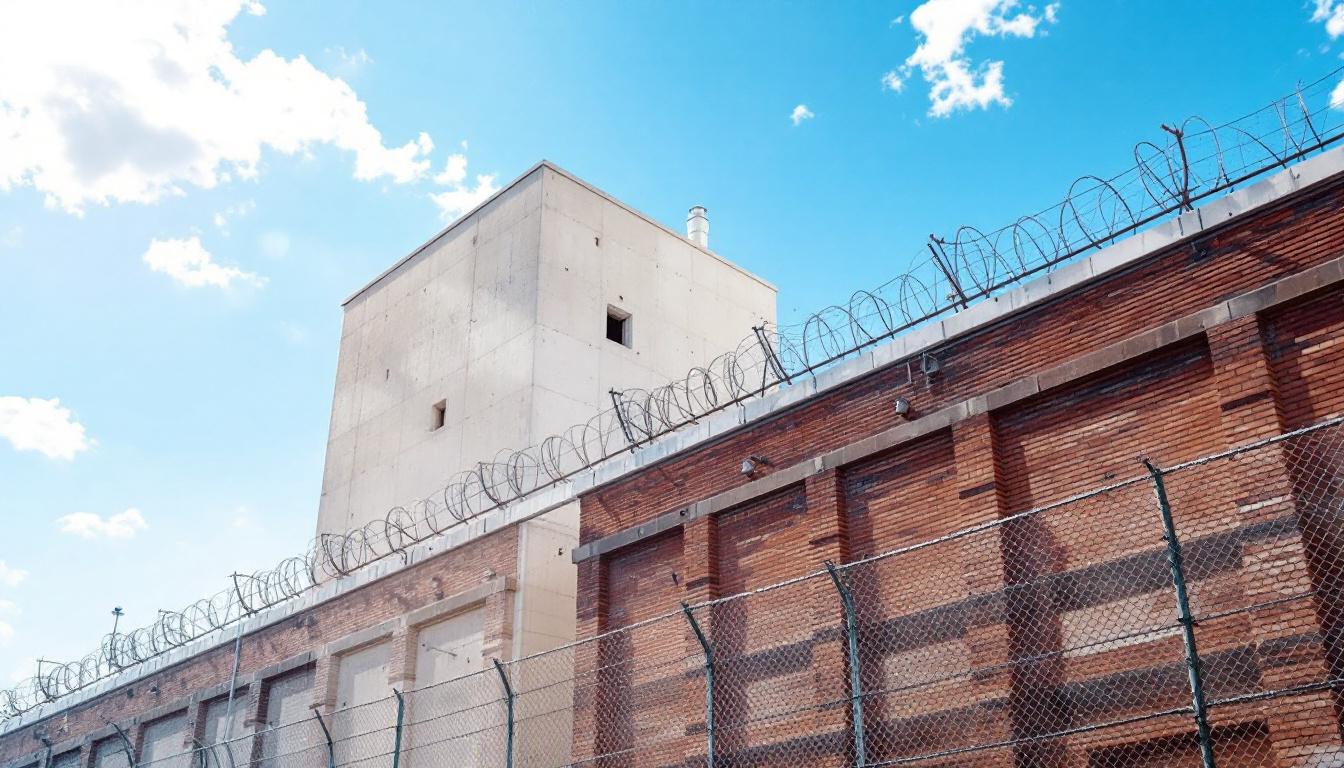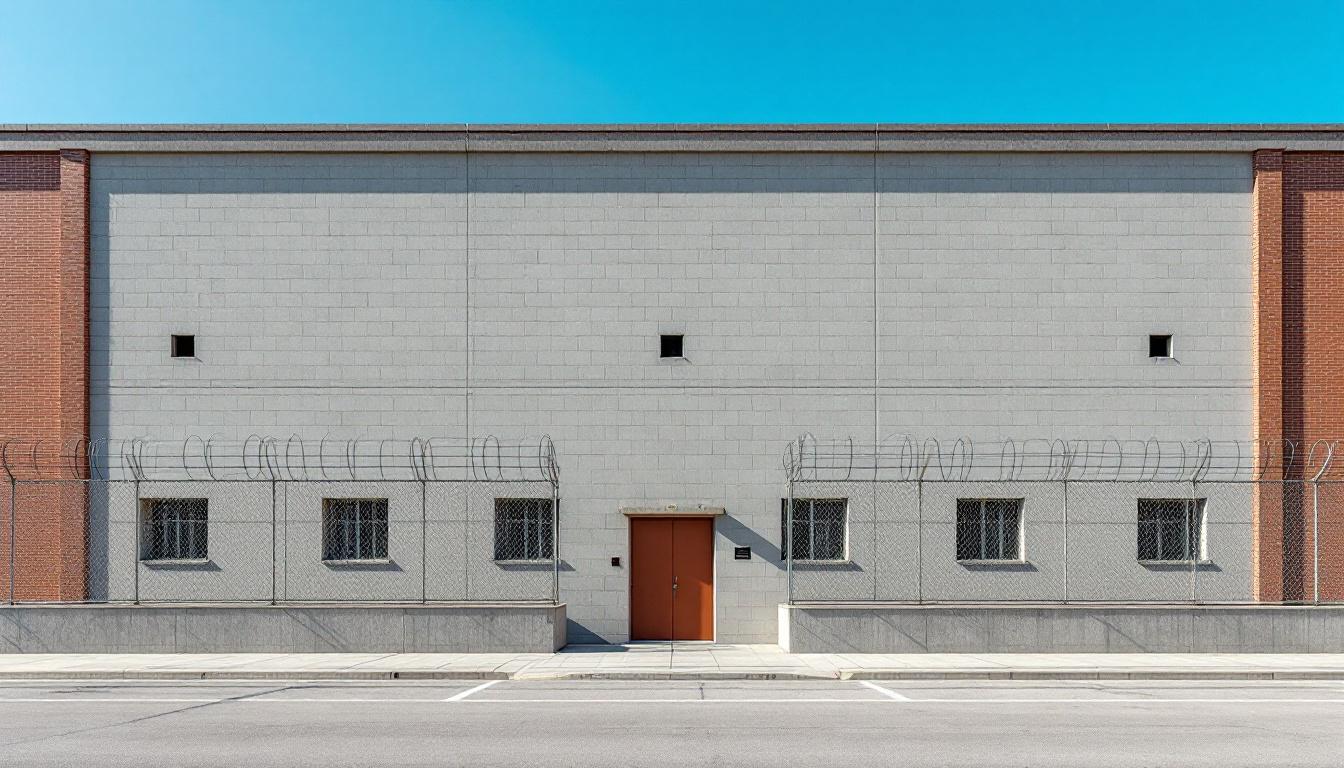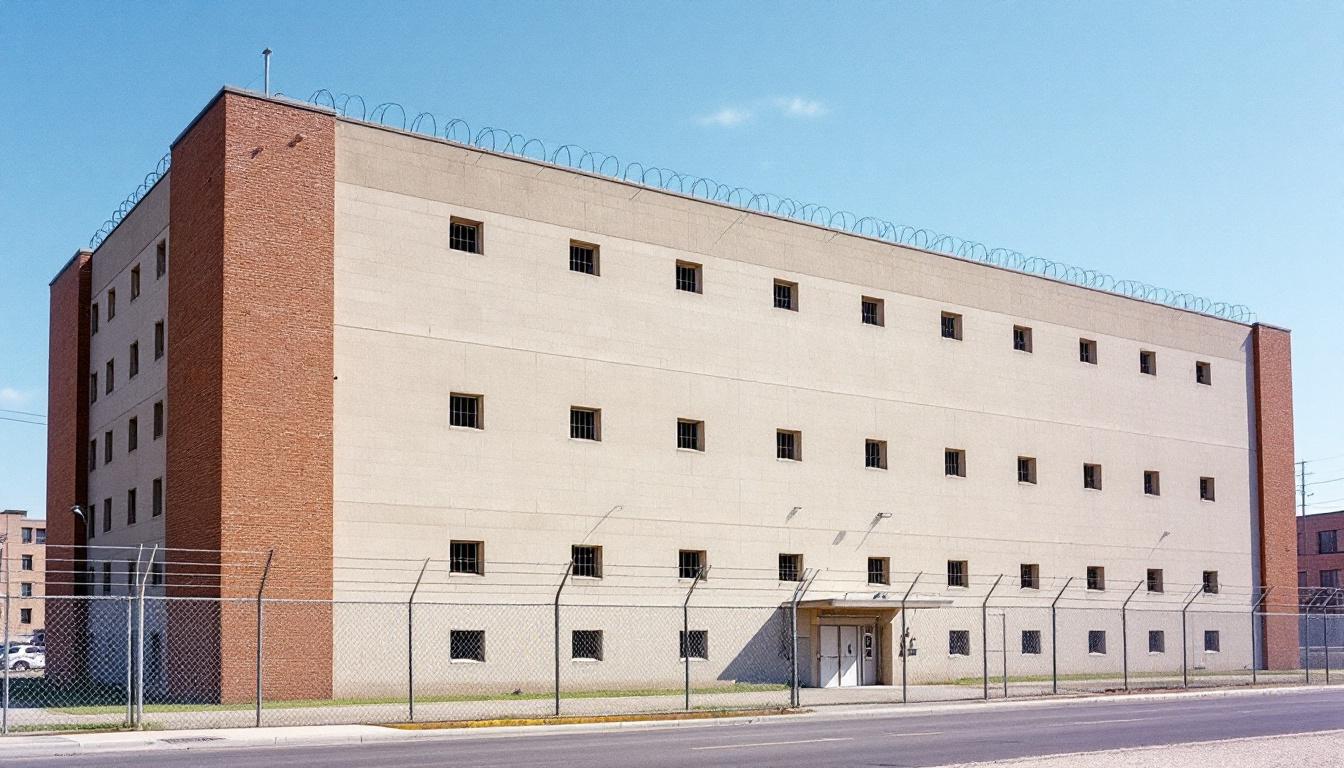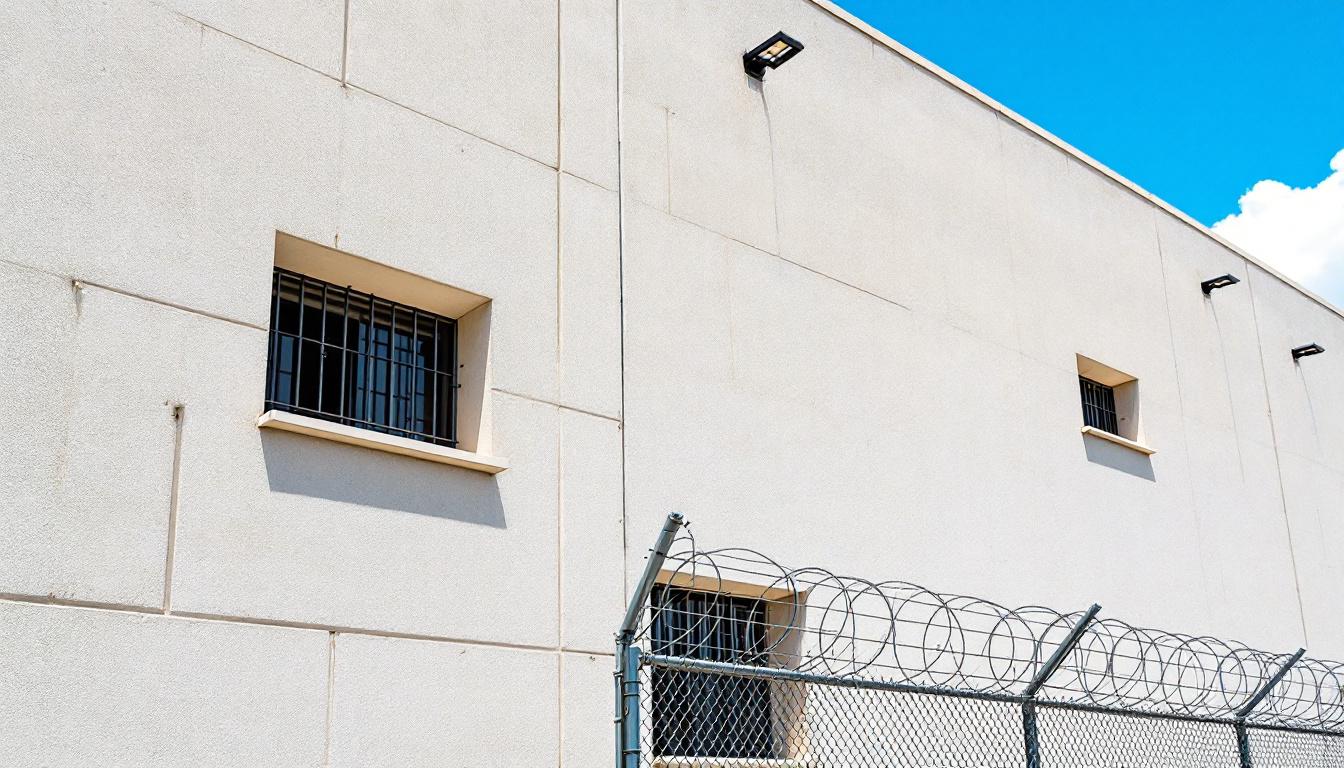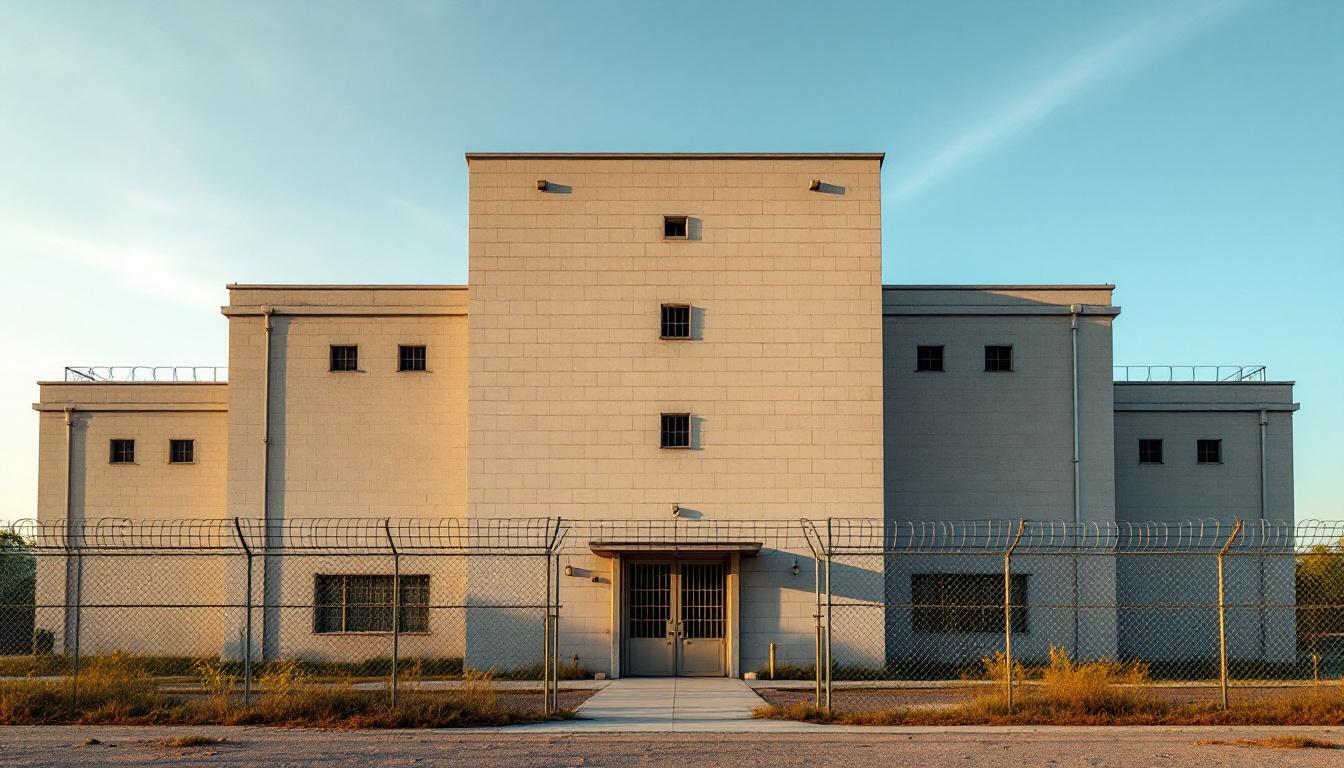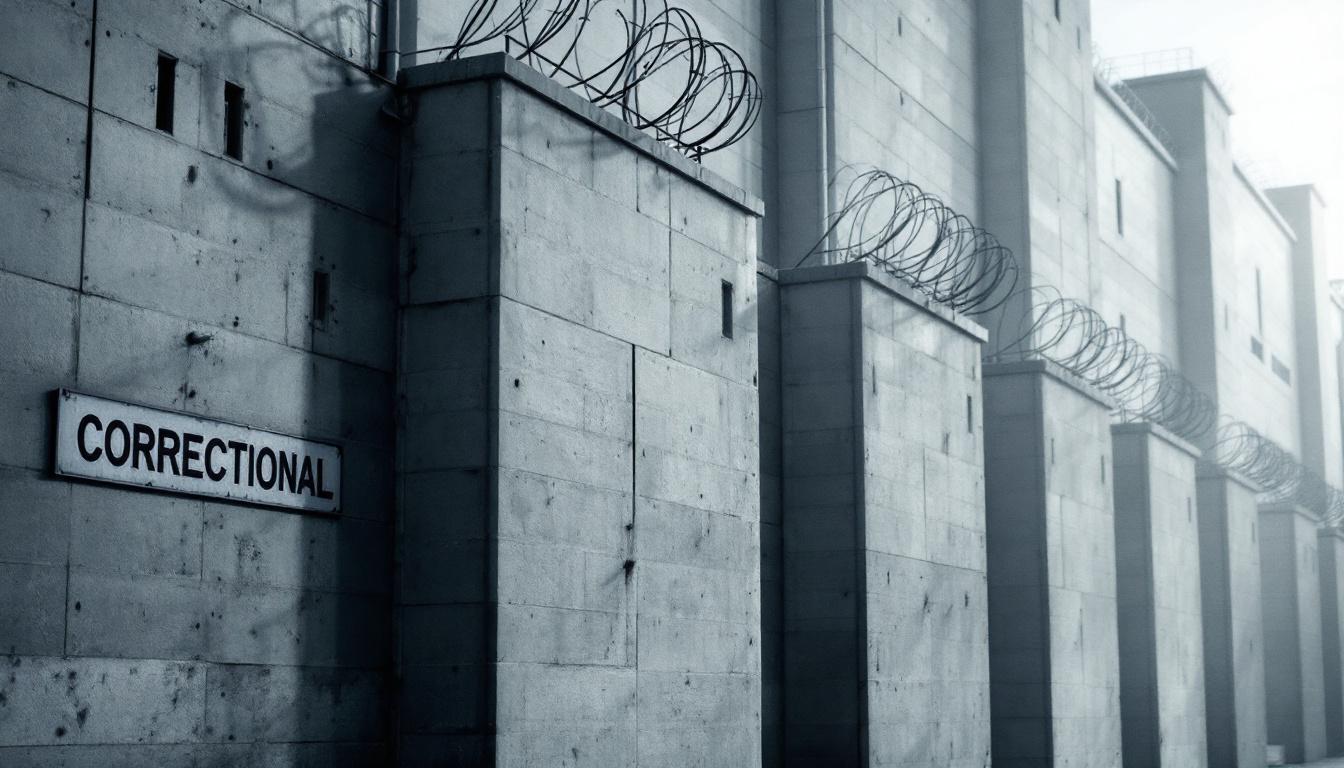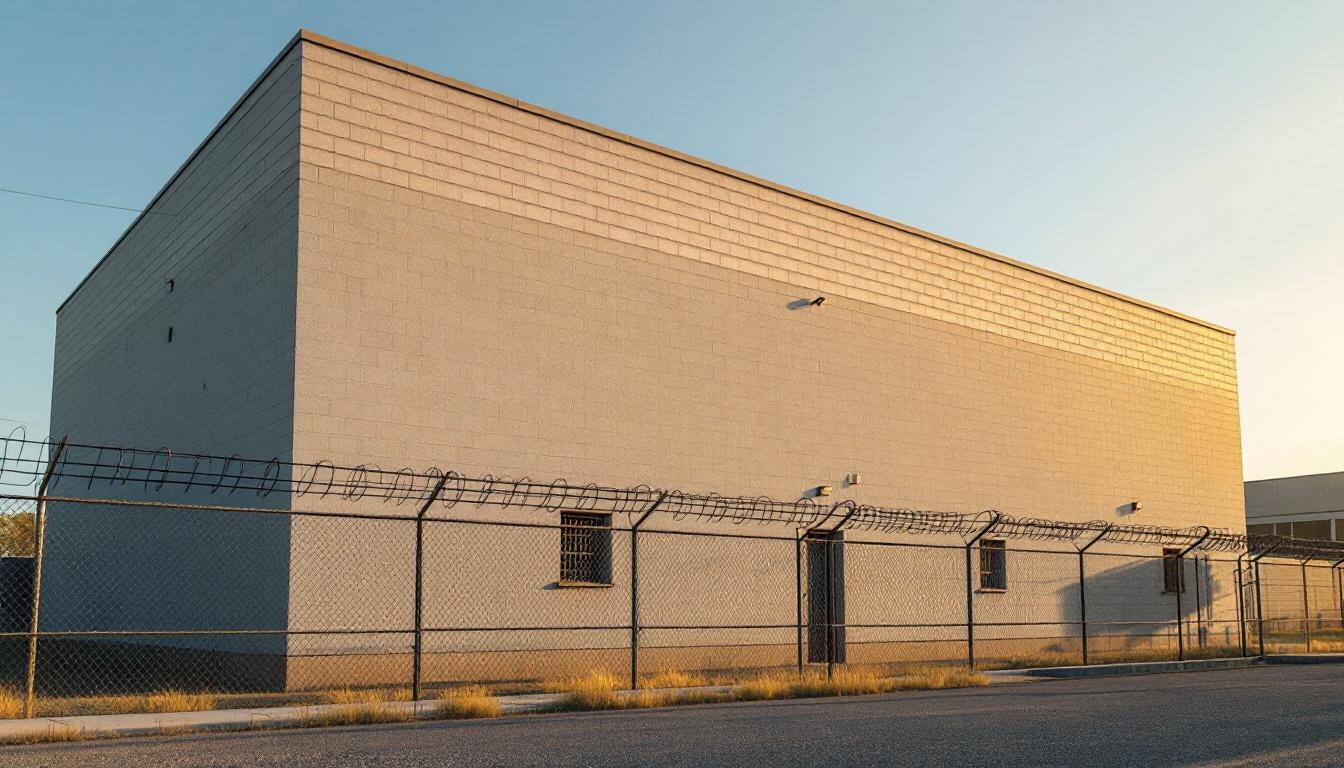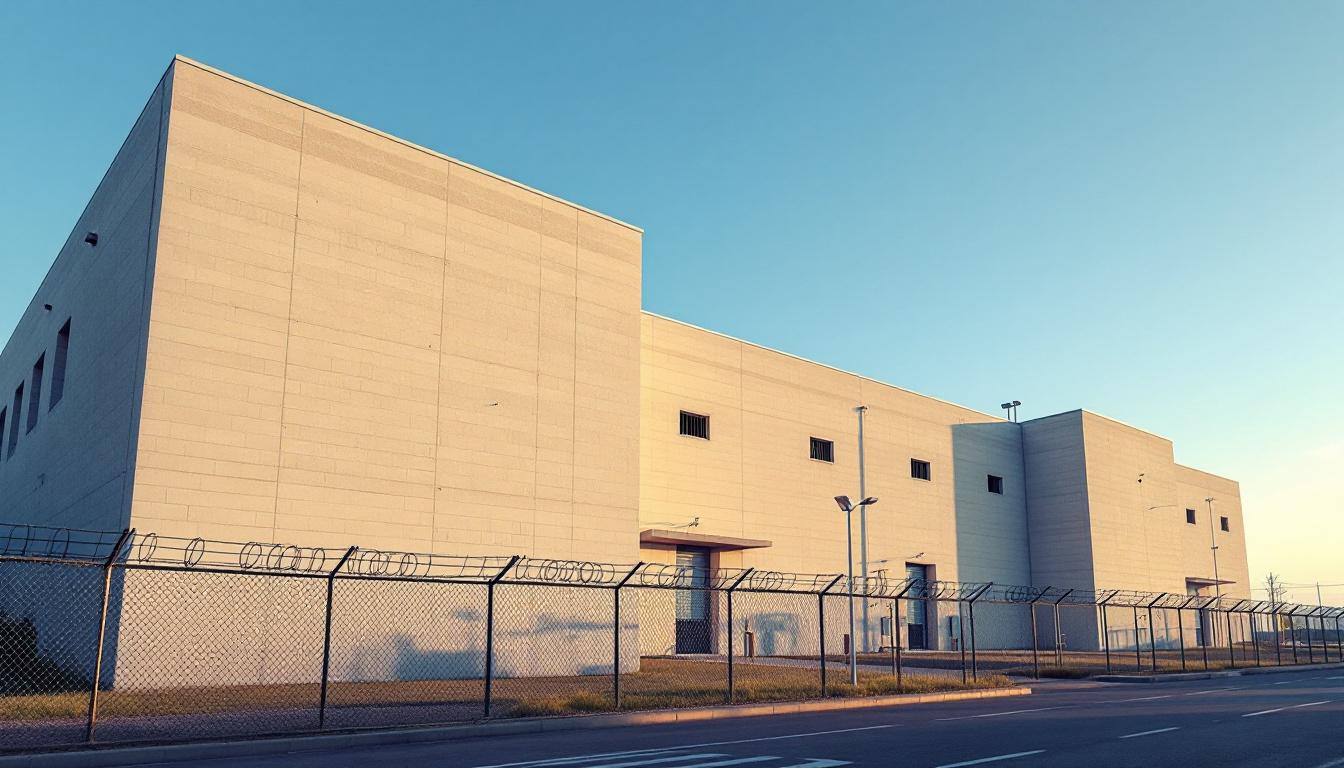
Quick Navigation
How to contact an inmate at Aurora Detention Center
This comprehensive guide will walk you through how to connect with an inmate at Aurora Detention Center. Follow the steps below to find an inmate and send letters and photos:
- Search for the inmate using our search tool below
- Create your account or log in to Penmate
- Write your message (up to 6,000 characters)
- Send instantly - inmates receive printed copies daily
Find an Inmate
Search for an inmate to start communicating today
Tip: You can search by first name, last name, or inmate ID number
To contact a person at Aurora Detention Center start by searching for the person on the official facility website. Perform a search by following these steps:
- Step 1: Enter their first name and last name into the search form and click "Search"
- Step 2: Locate their inmate record
- Step 3: Write down their Inmate ID and any housing information provided
Important! Be sure to enter the person's full name. Nicknames should not be used.
How to Send Messages to Inmates

You can use your phone or computer to send emails, letters, and photos to an inmate. Messages are sent electronically to inmate tablets or kiosks at the facility. If you would like to send a message, start by searching for an inmate at Aurora Detention Center.
Sending Photos and Postcards

A great way to send love and support to a loved one at Aurora Detention Center is to send photos and postcards. It only takes a few minutes to send photos from your phone and it makes a huge difference. You can also mail postcards with words of support and inspiration, or design your own postcard for special moments like birthdays and holidays.
Important! Be sure not to send any explicit photos or they may not be approved by the facility. You can also use a photo printing app like Penmate to make sure your photos are printed at the correct size (4x6 or 3x5) and are mailed according to the rules and regulations of Aurora Detention Center.
Frequently asked questions about Aurora Detention Center
-
How long does it take to deliver a message?
If you're sending an email message your letter is usually delivered within 24-48 hours. For messages sent via mail you should expect delivery within 3-7 days. All messages will need be approved by Aurora Detention Center.
-
How much does it cost to send a message to Aurora Detention Center?
You can send a message free using your phone or mail a message via USPS for the price of a $0.60 stamp and envelope. You can also purchase credits or e-stamps from services starting at $1.99.
-
What services can I use to contact an inmate at Aurora Detention Center?
Penmate
You can use Penmate to send letters and photos to an inmate from your phone. It's an easy way to stay in touch during your loved one's incarceration. Use the inmate locator to find an inmate's location and contact information, then you can send messages within a few minutes.
Securus messaging
Securus may be another option for communicating with an inmate at Aurora Detention Center. You can create a friends and family account and purchase credits to send messages. All messages will be reviewed and must be approved by the facility.
JPay
Some county jails and state prisons may support sending messages with JPay. You must register an account with the system, find your loved one, and purchase stamps to send messages. For some locations you can also attach photos.
Smart Jail Mail
You may also check if Smart Jail Mail is available at Aurora Detention Center. Smart Jail Mail is operated by Smart Communications and has contracted with some state and county jails. After purchasing credits, your messages and photos are sent to the facility, printed out, and then handed out to your loved one.
-
What is the mailing address of Aurora Detention Center?
Mailing address:
Aurora Detention Center
14999 E Alameda Pkwy
Aurora, CO 80012
Phone: (303) 739-6194Business hours:
- Monday: Open 24 hours
- Tuesday: Open 24 hours
- Wednesday: Open 24 hours
- Thursday: Open 24 hours
- Friday: Open 24 hours
- Saturday: Open 24 hours
- Sunday: Open 24 hours
-
What are the visiting hours at Aurora Detention Center?
Visiting hours at Aurora Detention Center vary by housing unit and security level. Generally, visits are scheduled on weekends and holidays, with some facilities offering weekday visits. Contact the facility directly at (303) 739-6194 or check their website for the current visiting schedule. Visits typically last 30-60 minutes and must be scheduled in advance.
-
What items are prohibited when sending mail to Aurora Detention Center?
Prohibited items typically include: cash, personal checks, stamps, stickers, glitter, glue, tape, staples, paperclips, polaroid photos, musical or blank greeting cards, hardcover books, magazines with staples, and any items containing metal or electronics. Only send letters on plain white paper with blue or black ink. Photos must be printed on regular photo paper (no Polaroids). Always check with Aurora Detention Center for their specific mail policies.
-
How do I send money to an inmate at Aurora Detention Center?
You can send money to an inmate at Aurora Detention Center through several methods: 1) Online using JPay, Access Corrections, or the facility's approved vendor, 2) Money orders mailed directly to the facility with the inmate's name and ID number, 3) Kiosks located in the facility lobby, or 4) Over the phone using a credit or debit card. Fees vary by method, typically ranging from $2.95 to $11.95 per transaction.
-
Can I schedule a video visit with an inmate at Aurora Detention Center?
Many facilities now offer video visitation as an alternative to in-person visits. At Aurora Detention Center, video visits may be available through services like Penmate, Securus Video Connect, GTL, or ICSolutions. Video visits typically cost $10-20 for 20-30 minutes and must be scheduled in advance. You'll need a computer or smartphone with a camera and reliable internet connection. Contact the facility for their specific video visitation policies and approved vendors.
-
What identification do I need to visit an inmate at Aurora Detention Center?
All visitors must present valid government-issued photo identification such as a driver's license, state ID, passport, or military ID. Minors must be accompanied by a parent or legal guardian who can provide the minor's birth certificate. Some facilities require visitors to be on the inmate's approved visitation list, which may require a background check. Contact Aurora Detention Center for specific ID requirements and visitor approval procedures.
-
How can I find out an inmate's release date?
To find an inmate's release date at Aurora Detention Center, you can: 1) Use the online inmate search tool if available, 2) Call the facility's records department, 3) Contact the inmate's case manager or counselor, or 4) Have the inmate provide this information during a call or visit. For privacy reasons, some facilities only release this information to immediate family members.
Facility Overview
Contact Information
Aurora Detention Center14999 E Alameda Pkwy
Aurora, CO 80012
Phone: (303) 739-6194
Official Website

About Aurora Detention Center
Nestled within Aurora’s diverse metropolitan landscape, where the Colorado plains meet the foothills of the Rocky Mountains, this detention facility serves as a vital component in the state’s correctional network. The Aurora Detention Facility, CO operates with a focus on preparing residents for successful reintegration into the surrounding community, emphasizing evidence-based programming that addresses the root causes of criminal behavior. Through partnerships with local service providers and community organizations, the facility typically works to connect residents with resources that extend beyond their time in custody.
Community-centered rehabilitation efforts at this CO correctional facility generally include educational opportunities, substance abuse treatment, and vocational training programs designed to equip residents with practical skills for employment upon release. The facility may collaborate with Aurora-area employers, educational institutions, and social service agencies to create pathways for successful reentry. Mental health services and counseling programs often form the foundation of the residents services approach, recognizing that addressing underlying issues is crucial for reducing recidivism and building stronger communities.
Located strategically within Colorado’s Front Range corridor, the detention center typically maintains connections with regional support networks that understand the comprehensive challenges facing individuals transitioning back into mountain region communities. These collaborative relationships often encompass housing assistance, job placement services, and ongoing support systems that help former residents maintain stability and contribute positively to Aurora’s diverse neighborhoods. The facility’s approach generally reflects a broader understanding that effective corrections work requires sustained community investment and shared responsibility for public safety outcomes.
Programs & Services
Educational and vocational initiatives form the cornerstone of rehabilitation efforts at Aurora Detention Facility, reflecting a comprehensive philosophy that views skill development and personal growth as essential pathways to successful reintegration. This multifaceted approach typically encompasses various learning opportunities designed to address the diverse educational backgrounds and career aspirations of residents. The facility’s commitment to holistic development often manifests through carefully structured initiatives that combine academic advancement with practical skill acquisition, creating an environment where residents may cultivate both intellectual capabilities and marketable competencies essential for post-release success.
The educational component of these initiatives typically delivers foundational academic instruction alongside specialized vocational training opportunities that prepare residents for meaningful employment. Educational programming often includes literacy development, high school equivalency preparation, and continuing education courses that may help residents advance their academic credentials while incarcerated. Additionally, vocational training initiatives frequently encompass hands-on instruction in automotive repair, where residents may develop technical expertise in vehicle maintenance and mechanical systems. These practical learning experiences often provide residents with industry-relevant skills and certifications that can significantly enhance their employment prospects upon release.
Support services and therapeutic initiatives complement the educational and vocational components by addressing the underlying factors that may contribute to recidivism. Therapeutic communities typically offer structured environments where residents may participate in group counseling, behavioral modification programs, and peer support networks designed to foster personal accountability and emotional growth. Additionally, grounds maintenance initiatives often provide residents with opportunities to develop work ethic and responsibility while contributing to facility operations. These support-oriented programs may deliver essential life skills training, substance abuse counseling, and mental health services that help residents address personal challenges and develop healthier coping mechanisms for successful community reintegration.
Daily Life & Visitation
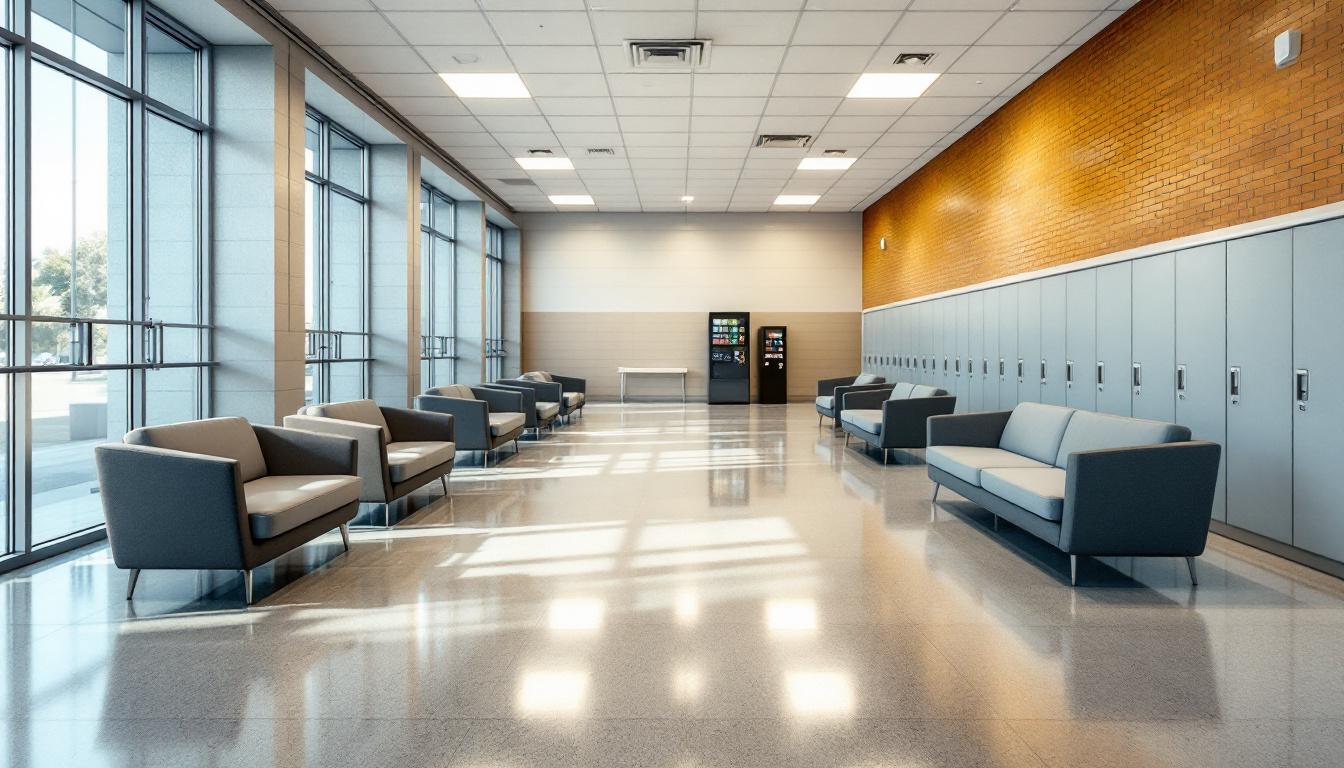
The steady rhythm of wake-up calls, scheduled meals, and programmed activities currently forms the backbone of residential life, while this consistent framework continues to provide residents with predictable structure throughout their time at the facility. Each day typically begins with morning counts and personal hygiene time, followed by breakfast service in designated dining areas. The structured schedule generally includes work assignments, educational programming, and recreational periods that help residents maintain routine and purpose. Security procedures are integrated throughout daily activities to ensure safety while allowing for meaningful participation in facility programs.
Additionally, living accommodations at the Aurora Detention Facility typically consist of housing units designed to accommodate multiple residents, with each person generally assigned their own sleeping area and storage space for approved personal belongings. Meals are usually served at scheduled times in common dining areas, with menus that aim to provide balanced nutrition while accommodating various dietary needs and restrictions. The commissary system often allows residents to purchase additional food items, hygiene products, and other approved goods using funds from their facility accounts, which family members can typically support through deposits.
While daily programming delivers structure through work assignments that may include kitchen duties, facility maintenance, or administrative tasks, recreational opportunities usually include access to television areas, reading materials, and outdoor exercise periods when weather permits. Visitation policies generally allow for scheduled visits with family members and approved contacts, often conducted through video conferencing or in-person meetings depending on facility protocols. Communication with the outside world typically continues through monitored phone calls and correspondence, helping residents maintain important family connections and support systems that contribute to their overall well-being during their stay.
Ready to Connect?
Start communicating with your loved one today
Search for an Inmate
